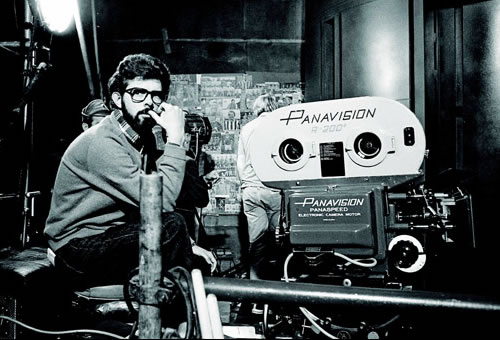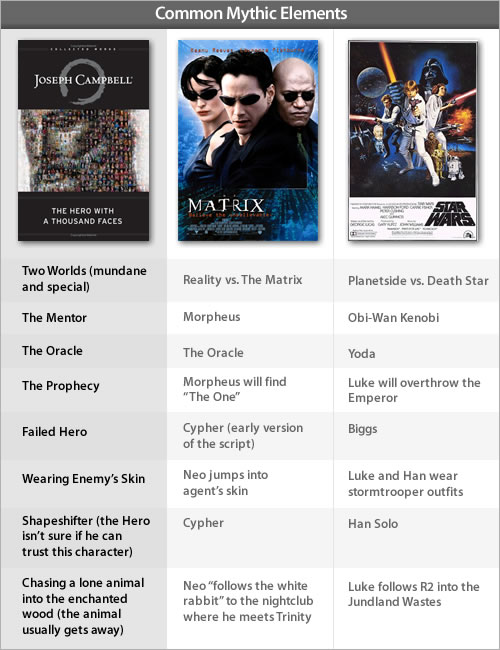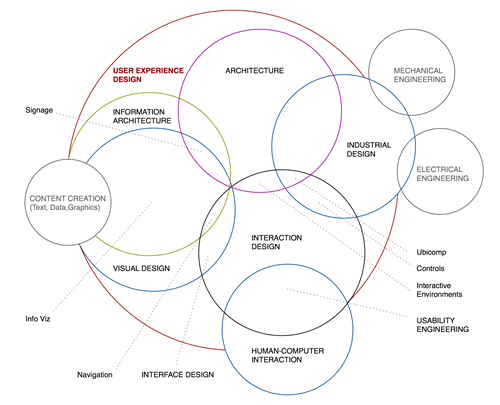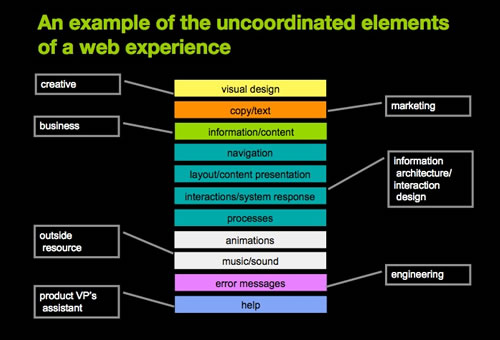UX Storytelling For A Better User Experience (Part One)
Stories have defined our world. They have been with us since the dawn of communication, from cave walls to the tall tales recounted around fires. They have continued to evolve with their purpose remaining the same; To entertain, to share common experiences, to teach, and to pass on traditions.
Today we communicate a bit differently. Our information is fragmented across various mass- media channels and delivered through ever- changing technology. It has become watered down, cloned, and is churned out quickly in 140- character blurbs. We’ve lost that personal touch where we find an emotional connection that makes us care.

It Begins with a Story
In 1977, a simple story set the film industry on its side. The special effects technology used to create this story had not been created or used in filmmaking at the time of its writing. The author disregarded what was popular and marketable at the time (apocalyptic and disaster movies) to create his own vision. The film starred unknown actors and the genre had mainly been seen in 1930s serial movies. It was turned down by many film studios and at one point was almost shelved.

The movie, if you haven’t guessed, was Star Wars. The author was George Lucas. Star Wars went on to become one of the most successful films of all time and turned into a pop culture phenomenon. It gave birth to the blockbuster and the trilogy, and completely changed the way movies with special effects were made. Many of today’s most influential film companies were spawned from the success of these movies: LucasFilm, THX, Industrial Light & Magic (ILM), and Pixar.
Star Wars wasn’t a new story though. It drew from mythic archetypes of stories told over thousands of years.
Revealing the Design in Stories
The creation of a story is often viewed as an almost magical or random process. The author sits in front of their canvas, the blank word processor, and begins to type whatever inspires them at the moment. Great stories, though, don’t just happen randomly; they are designed. There is a pattern at work here. In order to be entertaining, have the right dramatic cues, and tap deep into our collective psyche, a specific method is used to build the story. A story that fails to pull the audience emotionally and keep their attention may not have used enough of these patterns as a guide, as shown in the typical story arc below.

The structure of the story has been around since long before screenwriting was taught. There was a point that it remained simply an unnoticed rhythm in the background of every story. Some aspects of this structure — like the hero’s journey and comparative mythology — were first popularized by Joseph Campbell. He wrote about his discovery in the book The Hero with a Thousand Faces. Campbell was a student of Swiss Psychiatrist Carl Jung, who believed that we are all born with a subconscious idea of what a “hero”, a “mentor”, and a “quest” should be.
Campbell studied the structure of religion and myths across many cultures. What he discovered is that, consciously or not, every story (or myth) told had been created with the same basic formula. This is why great stories transcend even language barriers. It was this conclusion made by Campbell through his research that created large ripples in the waters of myth and religion.

The stories we have seen on the silver screen or read about in novels have been able to captivate us by continuing to use these patterns. We talk about dialogue and certain scenes at the water cooler as if they had happened to a mutual friend, rather than some fictional character. All because we became emotionally invested in the characters and the story.
This type of emotional investment is something that brands strive for every day. Starbucks doesn’t want to just sell us a cup of coffee; they want customers to become invested in their story — the ambience, the aromas, the community. The goal is to become the “third place” for people (work, home, and Starbucks). They say, for them, “It’s really about human connection.”
The Power of Emotion
When speaking about stories, we describe the experience in a certain way. It tends to be more of an emotional experience, sometimes affecting us more on a personal level in how we relate to the story. This is much different from the way we traditionally describe the experience with products like websites or applications. Those are seen as more utilitarian and task- oriented.
If we are able to accomplish what we came to do, say transfer some money in a banking application, then it has been a good user experience. In order to achieve our goals, the interface should be usable and function the way we expect. This view is preached by many usability experts including Donald Norman, a professor of cognitive science and usability consultant for the Nielsen Norman Group.

After hearing that if people followed his rules “everything would be ugly,” Norman decided to explore people’s relationship to design. The result was the book _Emotional Design_. Through his research, Norman found that design affects how people experience products, which happens at three different levels, and translates into three types of design:
- Visceral Design. This design is from a subconscious and biologically pre- wired programmed level of thinking. We might automatically dislike certain things (spiders, rotten smells, etc.) and automatically like others (“attractive” people, symmetrical objects, etc). This is our initial reaction to the appearance.
- Behavioral Design. This is how the product/application functions, the look and feel, the usability, our total experience with using the product/application.
- Reflective Design. This is how it makes us feel after the initial impact and interacting with the product/application, where we associate products with our broader life experience and associate meaning and value to them.

There is a lot more to emotion than can be covered here, but understanding those basic levels of processing gives us some insight into why storytelling is so powerful. Consider how the levels of thinking play off each other in an amusement park: People pay to be scared. At the Visceral Level we have a fear of heights and danger. At the Reflective Level we trust that it is safe to go on the ride, and we seek that emotionally charged rush and sense of accomplishment (overcoming that fear of heights) after the ride is finished. Knowing that emotion is so vital to how we think makes it more important to create not just a functional and usable experience, but to seek and make a meaningful connection.
The Basics of Storytelling for User Experience
At a basic level, storytelling and user experience have common elements — like planning, research, and content creation — that can be utilized for effectively developing an experience. Storytelling offers a way for the team to really understand what they are building and the audience that they are creating it for. Stories allow for the most complex of ideas to be effectively conveyed to a variety of people. This designed product/experience can then offer meaning and emotion for its users. The professionals that are currently using the power of narrative in their projects are doing it in vastly different ways. The following sections attempt to outline some of the current usage and benefits of modern storytelling.
Bring Teams Together
User experience professionals typically have to work with people from many different backgrounds. Depending on the type of experience, it might require the effort of everyone from an engineer to a user interface designer. Also, in many cases, the approach in creating websites or applications is to consider the technology, or limitations of that technology, first. Finally, to make matters more complex, larger teams tend be split with concerns regarding their domain. For example, the marketing person is going to focus on their directives and motivations based on their initiatives. This is not always in the end- user’s best interest and results in a diluted and poor experience.

The infographic above depicts the many different fields that make up the disciplines of user experience. The user experience team selected to create an iPhone application for the masses would be quite different from one that is developing a medical device used by doctors. As described earlier, the individuals that have been involved in crafting stories have been successful in tapping into a way of communicating that has been around for thousands of years. Utilizing storytelling, user experience teams can also inject emotion and value into the end product for users.
User- Centered Goal
In reading through the storytelling approach, it might seem that the story is just another way of saying “strategy.” With storytelling, though, tied to the story the interactions should communicate is a more user- centered goal. Companies like Apple have used similar methods in their design process to really define what they are building.
Cindy Chastain refers to it as an Experience Theme. She says this theme is “the core value of the experience” being created. Christian Saylor refers to it as finding the Lead Character. Without this user- centered goal, he states, we are just “designing for the sake of designing.”

By centering around a specific theme, or character, the uncoordinated elements of an experience all have a clear goal and purpose. With storytelling, a diverse team creating a website or application can collectively link together the tangible elements and create something that is a meaningful experience and is more than just bits and bytes.
Defining The User
There is a lot of discussion and articles about usability and functionality of websites and applications. Functionality, of course, is important. For example, what good is an airplane if the engine isn’t powerful enough to get it off the ground? If you take a step back though, the more important question should be: How far does the user need to go? If it’s only a few miles down the road, then it really doesn’t matter if the plane is functional, it’s the wrong solution altogether. So, discovering what we really need to build is a key in the initial phase of building the user experience.

When research is finished, we typically move on to create personas as a way of understanding the user and can be looked at as part of creating the story. By building a fictional representation of the user that is based on real research and observation, we are able to empathize with them and really understand their needs. Using the created personas and then creating stories about them, we are able to cast a more meaningful vision of the project.

The UX storytelling approach allows us to transfer this research in an anecdotal way. This has shown to have a better recall rate of information. In addition, being able to empathize with users through stories allows for better understanding of the emotional side of the experience. Films and video games deliver successful experiences that impact people on an emotional level. This is something people will begin to expect more from websites and applications that they use everyday. We can evolve the focus of creating a simple task- driven and functional website/application into a valuable human connection. We are, after all, a “global campfire” as Curt Cloninger refers to it. He goes on to say, “But the web is not a global network of connected computers. The web is a global network of connected people. And story- telling is still the most effective way to emotionally impact people.”
The Benefits
Most projects have a lot of documentation outlining their goal and strategy. These come in a set of business requirements, functional documentation, and any other pieces of supporting research/information. Using storytelling can help improve the overall product/experience:
- Puts a human face on dry data
- Can simplify complex ideas for a team
- More efficient team collaboration and purpose
- Insight into the key users
- Setting a project direction faster
- Better communication within large agencies/organizations
- Experience delivers meaning and value to users

Storytelling can help teams focus their efforts on everything from the content on the website to understanding the business problem in a new way. For example, you can define the scope of a project quickly without designing or wireframing screens. Dorelle Rabinowitz shows how The UX team for Yahoo Personals created a story around how a fictional dating couple would go through some specific scenarios. Using this, the team was able to come to a better understanding of what the website should do and the type of experience the users go through. It opened it up from very task- and strategy- based steps to the more real and emotional experience of dating. It is a powerful way to really get the team talking directly to the experience rather than creating documentation that only talks around it.
Happily Ever After: The Reality

There are many different opinions on what the ideal user experience process should be. Many of them stem from the fundamental approaches developed by Alan Cooper, a pioneer in building software with user- driven experiences. But as technology evolves, so do the approaches and processes to create solutions that meet users’ needs. The variety of approaches in UX are akin to the number of frameworks available for developing software. Much of the time it comes down to what is best for the type of projects a team typically works on.
Your ability to adhere to a process is dependent on many things, like timeline, budget, and business goals. In reality, it’s not always possible to do everything as specifically outlined. UX Storytelling is a way to connect teams quickly, and gain insight and understanding. The experiences we create communicate with those elements through the design, content, and user interaction. Storytellers have successfully been communicating for much longer than websites have been around — which makes it a valuable tool from the business side of design.
To Be Continued
In the second part of “Better User Experience Using Storytelling” we will hear from creative professionals leading the way in this relatively new world of combining the craft of UX storytelling with user experience. We’ll also look at how storytelling can be applied to more than just interactive experiences — we find it in everything from packaging to architecture.
Resources
- Recent Trends In Storytelling And New Business Models For Publishers
- The Art Of Storytelling Around An App
- Content Strategy: Optimizing Your Efforts For Success
- Make Your Content Make A Difference



 Get a Free Trial
Get a Free Trial
 JavaScript Form Builder — Create JSON-driven forms without coding.
JavaScript Form Builder — Create JSON-driven forms without coding. Register For Free
Register For Free Devs love Storyblok - Learn why!
Devs love Storyblok - Learn why!

